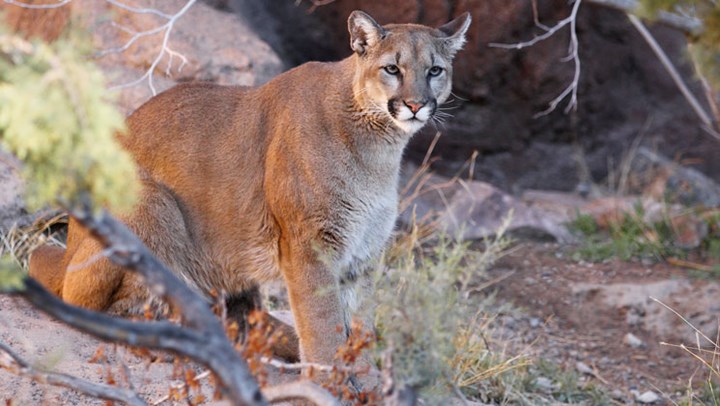
by Phil Phillips - Tuesday, May 22, 2018

On May 19, two mountain bikers were attacked by a mature mountain lion in the foothills east of Seattle, Wash. One was killed and the other had major lacerations on his scalp and face. News reports explained that the bikers saw the mountain lion chasing them and got off their bikes to try and scare it off. The lion ran away, but before they could get back on their bikes it returned with a vengeance. It grabbed Isaac Sederbaum, 31, by the head and shook him before attacking and killing S.J. Brooks, 32, and dragging him into the woods.
Sederbaum had to pedal for a long distance to get cell phone service. He called 911 around 11 a.m. PT on Saturday to report the attack, shouting “Can you hear me? Help!” When the search-and-rescue team arrived, it found the mountain lion standing over Brooks’ body. According to Sgt. Ryan Abbott, a spokesman with the King County Sheriff’s Department, Sederbaum was airlifted to Seattle’s Harborview Medical Center. He was listed in serious condition but has since improved.
Washington Department of Natural Resources (DNR) officials used hounds to track and kill the mountain lion, aged at 3 to 4 years old. The attack was reported to be the first fatal mountain lion attack on a human in Washington in 100 years.
Like in my home state of Colorado, Washington manages its mountain lion populations by setting a quota on the number of animals that can be taken each year. Once the quota is filled, the state closes the season. However, unlike in Colorado, Washington does not permit hunting mountain lions with hounds unless it must track a problem cat. Anyone who has ever hunted a mountain lion knows that filling the quota on such a secretive and nocturnal game species without using hounds would be extremely difficult unless there were an abundance of cats. Quite telling, in the 2016-2017 hunting season, Washington hunters were permitted to take more than the recommended quota, underscoring the sheer number of these big cats throughout the state.
Interesting to note, yesterday the Washington Post reported that this particular lion was underweight for its age and is going to be tested to see if it was sick. So consider this: A mature lion, even if it was in poor condition, was able to attack two adult male mountain bikers, killing one of them and dragging him into the woods. The fact that these animals are not hunted with hounds and are only hunted by quota does not build a fear of humans, which could lead to such an attack. As Washington DNR Capt. Alan Myers noted in the article, such attacks are uncharacteristic of mountain lions, which are normally solitary animals that run off when confronted by humans. “For it to attack two human beings in the manner that it did was incredibly abnormal. … They do everything they can to avoid human contact.”
Sadly, the two men who were attacked Saturday did what state wildlife authorities recommend: They stood their ground and tried to scare off the lion. As we look to the future, scenarios like this one call to mind the importance of ongoing scientific management for all wildlife, predator and prey species alike. Particularly as human populations expand, legal, regulated hunting is not only the key to wildlife population control. It is how we ensure current and future generations always have wildlife and wild places to enjoy.
If You Encounter a Mountain Lion …
The Washington DNR and other state agencies that regularly face issues with mountain lions offer this advice for anyone who crosses paths with these predators.
E-mail your comments/questions about this site to:
[email protected]
Proudly supported by The NRA Foundation and Friends of NRA fundraising.
